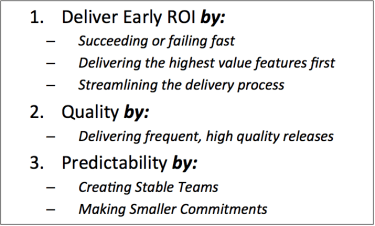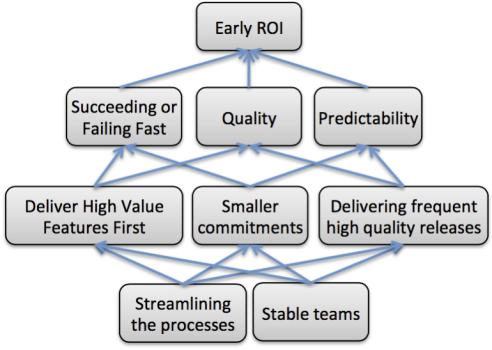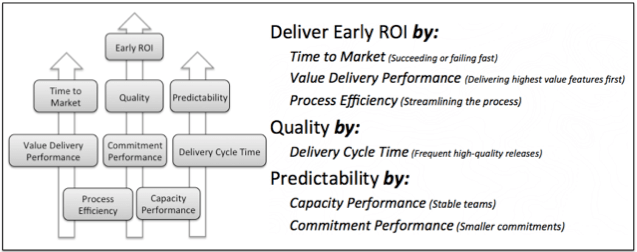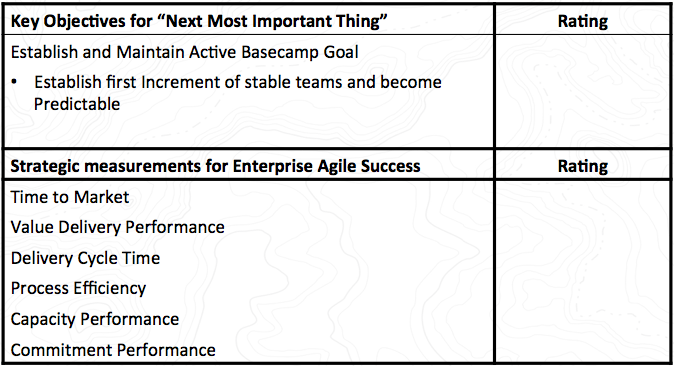What’s the Pulse of Our Enterprise Transformation? – Part 3 on Transformation Scorecards
This is the last post in my series on using metrics to gauge the success of an enterprise transformation. As an enterprise transformation consultant, one of the key challenges I face is ensuring the steps I recommend throughout the transformation will help the organization achieve their goal, or the business drivers that inspired the transformation.
In part 1 of this series I framed up my hypothesis that in order to answer the question we need a business metric dashboard that is oriented around the transformation’s goal.
I continued the conversation in part 2 by exploring a set of challenges that are fairly typical to help answer the question of “why transform” and start thinking through a way to use a balanced scorecard as a business metric dashboard. The business challenge that I identified was:
“Our competitors are startups and they will try anything to eat our lunch. It takes us almost a year to release a new idea into the marketplace and by that time we are several months behind the next startup.”
In this post I’d like to frame that up just a little bit more to get to a set of clear business drivers. Let’s continue that discussion by imagining that our enterprise leader says the following as their primary goal or drivers for the transformation:
“We need to create an organization that is able to deliver early returns on our investments, quickly understand how the market is changing, while continuing to provide predictability and high quality so that we can make and meet both internal commitments and marketplace commitments for our established customers. In essence, our business drivers would be Early ROI, Quality & Predictability”
So what’s my take? How would I go from this statement to a business metric dashboard that would help us to answer the question – “Are we succeeding?”
It’s important to take the time up-front to really consider the desired end state, working with the leadership and enablement groups to identify the key strategic objectives that will deliver the goal. These are sometimes referred to as the strategic pillars that will support and deliver the desired outcome. For the goal identified above, the strategic objectives may look something similar to those in the picture below.
While considering the strategic objectives, it’s important to look for relationships, or correlations, between each of them. These relationships help me to better understand how focusing on one objectives will impact the other objectives. These correlations are key to understanding the best approach for an incremental and iterative transformation. To help with this, I like to use a tool that Dennis Stevens first brought to my attention, the strategy map.
Using the above map I am able to understand how each objective has the ability to influence or be influenced by the other objectives. I am also able to see themes or groupings between the objectives. In essence, Early ROI will be driven by ensuring the market fit is achieved quickly while keeping customers happy with the overall product quality and timelines. Each of these are driven by operational objectives that in turn are driven by organizational enablement objectives. These four groupings provide a balanced set of perspectives that can be incorporated into a context card that will focus our transformation phases for eventual success.
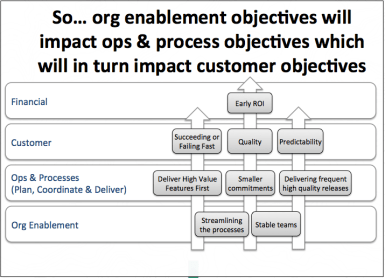
Recall the original goal for this post was to establish a business metric dashboard that would help us to answer the question “Are we succeeding?”
I’m not quite there yet; but, this seems close! Next I’d like to identify specific measurements for each of the identified objectives. The following pictures show two different ways of visualizing the specific measures. The first (above) shows the strategic metric map, or the balanced scorecard perspective. The second (below) directly relates each metric to its key component of the identified business drivers.
Using the later perspective, I typically like to create a context card that will be used as the ongoing scorecard for the transformation. This context card also provides a clear line of sight into the near-term goals that have been identified by the enterprise or myself as we incrementally transform the organization. Combined, the context card provides both a near term perspective on the original question “Are we succeeding” and the long term business metrics that need to be accomplished for the entire transformation to be deemed successful according to the original business drivers. An example of this type of business measurements dashboard is included here.
I’d love to hear your feedback. Do you think this helps provide clarity around how to establish a set of business metrics that will enable an organization to answer the original question of “Are we succeeding with our enterprise transformation?”
Thanks for reading!

